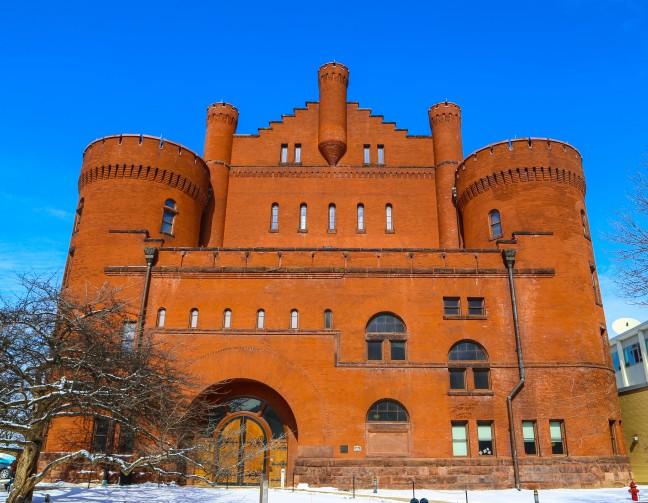Editor’s Note: This story has been updated to reflect the correct date construction of The Red Gym began. Construction began in 1892, not 1982.
Sitting on the shores of Lake Mendota, overlooking the Memorial Library and Memorial Union is the Red Gym. Though it used to be a gym, the name is no longer very accurate. Now, the building hosts so much more.
The Red Gym has a rich history and is now also a great place for students to come together and get to know different cultures and ethnicities.
The gym was designed by architects Alan D. Conover and Lew F. Porter to replace a smaller gym that burned down in 1891, according to the International Student Services website. It was originally built as a gymnasium and armory in the 1890s and was supposed to resemble a brick castle. Its construction started right away in 1892.
The Red Gym was also used for social gatherings, sporting events and cultural events. It held political gatherings because for many years it was the largest space available in Madison. The Red Gym hosted several sporting events, including championship basketball games from 1911 to 1930.
Jan. 2, 1970, arsonists lit the Red Gym on fire early in the morning. The fire damaged the southeast side, and it took more than seven hours to get the flames under control.
After reconstruction, athletes began using the gymnasium and armory again. But, women were not intended to use these facilities. Women basketball players began to protest by using the basketball courts in the Red Gym and refusing to leave when asked. In 1973, women were allowed to use the Red Gym facilities at their full potential.
In 1988, the university found a need for more centrally located spaces for students and advisors to meet. The chancellor and dean of students at the time agreed the Red Gym would be a perfect place for these meetings to take place.
In 1998, restoration processes were complete. The Red Gym was now not only a multiple student services office, but contained a public lounge area, student gallery, media room and multi-purpose On Wisconsin Room.
The Red Gym continues to use the newly constructed building to offer services to so many diverse groups on campus.
One of these organizations is UW’s International Student Services.
The University of Wisconsin is home to over 6,000 international students from all around the globe. UW is consistently ranked within the top 20 universities for the largest number of international students. UW’s International Student Services headquarters is located in the Red Gym.
Students come to UW with diverse economic, educational and social backgrounds. But this contrast can create a large gap, socially and academically, between them and other UW students. Fortunately, the UW International Services Program, or ISS, has done a lot to help counter this problem.
The university has created a BRIDGE program to help foreign students overcome potential social barriers. BRIDGE stands for Building Relationships in Diverse Global Environments.
The program connects students with more peers from around the globe as well as locals. Students are then able to build relationships and explore the Madison community with new friends. This program partners international students with a student advisor to mentor them. According to the ISS website, students often bond with one another pretty quickly.
The program helps American students who want to have an international experience right at their school, and it helps international students immerse themselves in American culture.
Along with the BRIDGE program, the ISS program holds a biweekly “Global Café.” Global Café enables students to learn about different cultures and meet other UW international and local students. Each “cafe” is run by a different student organization where students present their cultures through games, food, music and more.
International Engagement Coordinator and Director of Global Cafe, Jay Stokes, appreciates that the event is open to everyone and gives student leaders an opportunity to showcase their culture with international and local scholars.
Stokes explains that Global Cafe is different from other clubs because it allows all students to show up for free and immerse themselves in different cultures.
“It is not just for international students, it’s for all students,” Stokes said.
To help international students with their studies, UW has developed tutoring programs, learning programs and support programs as well as learning centers, writing centers and math centers for students who might need extra help understanding what they are doing in class.
ISS also allows students to sign up for undergraduate research programs, first year interest groups and volunteer opportunities to achieve more academic, personal and professional growth.



